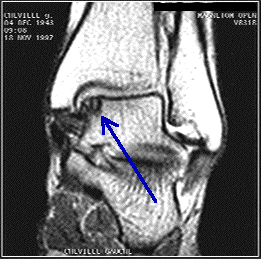What is and ANKLE-BRACHIAL INDEX (ABI) Test?
What is and ANKLE-BRACHIAL INDEX (ABI) Test?
An ABI test is a simple,
reliable test for diagnosing PAD in the legs. The test measures the blood
pressure in your ankles and compares it to that in your arms, while lying down
comfortably in the office chair. The ABI
test uses a hand-held ultrasound Doppler that is painless, and does not require
entering the body.
Who might have an ABI test?
ABI should be performed
annually on patients with at least one of these factors:
·
every patient over 60 years
old,
·
every diabetic over 50 years
old,
·
current or former smokers
over 50 years old,
·
overweight,
·
history of heart attack,
stroke, TIAs, PAD
·
history of vascular surgery,
angioplasty, open heart surgery
·
high blood pressure,
·
high cholesterol.
Why do it?
 It is simple, reliable, and
safe, and the ABI test is usually the first test used to diagnose PAD in patients
who have active symptoms such as leg discomfort, numbness, or non-healing
sores.
It is simple, reliable, and
safe, and the ABI test is usually the first test used to diagnose PAD in patients
who have active symptoms such as leg discomfort, numbness, or non-healing
sores.
The ABI is also used to look
for PAD in patients who do not have any symptoms, but are at risk for the
disease because they have risk factors for PAD. In one large study, women with an ABI of 0.90
or less were 3.5 times as likely to die of heart disease within 10 years
compared to women with a normal ABI – a silent killer.
ABI testing also helps
document vascular disease when trying to meet Medicare qualifying criteria for
medical necessity in the treatment and maintenance of mycotic nails or callus
care.
In patients who have already
been diagnosed with PAD, the ABI can monitor how severe your PAD is and help
predict whether wounds will heal on their own. After a procedure to open leg arteries
such as angioplasty, stenting, or lower-extremity bypass surgery, an ABI can
indicate how effective the treatment was at improving blood flow in the leg.
What do the numbers mean?
A low ABI score means the
blood pressure in your legs is lower than that in your arms, indicating that
PAD is restricting blood flow to your legs. The lower your ABI score, the more
severe your PAD is. A low ABI score also indicates you are at risk for other
forms of artery disease, including coronary artery disease. A high ABI score can indicate arteries that
are not compressible by the blood pressure cuff and are associated with
hardening of the arteries versus a blockage within the artery.
*Patients who have a new suspected
blood clot in the veins of the legs (deep vein thrombosis, or DVT) should not
have an ABI test.
What happens next?
If you have only
mild-to-moderate PAD, Dr. Pulapaka may start you on a walking program or she may
decide to start you on a treatment plan and check your ABI again if your
symptoms get worse.
If your ABI score indicates
that you may have PAD, you may need more tests to examine blood flow in your
leg arteries. This is usually accomplished by an Arterial Duplex Ultrasound.
This will be scheduled in the office with our vascular technician. Once the Duplex is complete and the final
report generated, Dr. Pulapaka will discuss the results with you on a follow-up
appointment in the office.
How reliable is the ABI test at detecting PAD?
The ABI is one of the most
accurate & simple tests for diagnosing PAD in the legs. Studies have shown
that the ABI can identify about 90% of women with PAD, and fewer than 5% of
women with a low ABI turn out not to have PAD.
As surrogate marker for
atherosclerosis, the ABI score has been found to give very important prognostic
information regarding future cardiovascular events. Current evidence suggests the use of ABI for
identifying high risk patients for future cardiovascular and cerebrovascular
mortality. In doing so, one can aggressively modify risk factors to prevent
both short and long term events.
ABIs are a simple and
effective why to help screen, control, and monitor PAD.
· Cigarette smoking
· Obesity
· Vascular/heart surgery
· Diabetes mellitus
· High blood pressure
· Physical inactivity
· High blood cholesterol
Signs and Symptoms of PAD
· Painful cramping of leg
muscles during walking
· Burning/aching pain in the
feet and toes while resting
· Toe and foot sores that do
not heal
· Color changes in the skin
· Cooling of the skin in
specific areas of legs or feet
Arrive at the office, unrushed and dressed comfortably, so that we can easily
take your blood pressures on both arms and both legs without removing a lot of your
clothing. Do not smoke for at
least two hours prior to the test. You
may eat as usual and take your medications as usual.
If you have not had or scheduled yours yet, call our office for your appointment today: 386-738-3733
